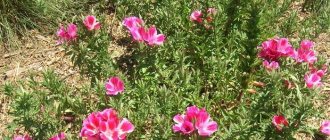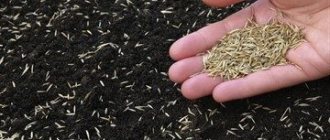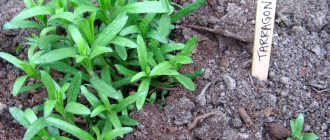The most popular shrub from which you can get a large harvest is considered to be gooseberries. Even if only one bush grows in the garden, it will still bear fruit, because it is a self-fertile crop. Due to the aroma of its fruits and their taste, the berries are often used for winter preparations. In addition, gooseberries are rich in organic acids, vitamins and tannins.
However, those who have just decided to purchase a seedling of this plant are wondering how to plant gooseberries correctly. This, as well as crop care, will be discussed in this article.
When is the best time to plant gooseberries?
It is believed that the most favorable time for planting gooseberries is at the end of September and ends by mid-October. Of course, like most other shrubs, it can be planted in the spring, but the success of such an event (easy survival of the seedling and its good growth in the first year of life) is much higher with autumn planting.
Planting gooseberries in spring
A gooseberry seedling planted in the spring can take a long time to take root, since the heat sets in quickly, the soil dries out, and the roots have not yet had time to get used to their new conditions. Therefore, before planting, it is better to place a young bush in a solution of any synthetic biostimulant - Epin, Zircon, Kornevin (concentration and time are indicated in the instructions). In the spring, planting in a hole with nutritious soil prepared in the fall should be done as early as possible. It will be good if you can do this in the first half of April. It is important that the seedling has not yet recovered from winter hibernation. When the buds begin to bloom, the chances of successful survival will be significantly reduced.
It is best to plant the seedling in the spring obliquely, at about 45° relative to the ground, although usually (i.e. in the fall) this is not done with gooseberries. The inclined position of the bush will help it grow its root system faster. This will speed up the formation of new root shoots, and the plant will more easily take root in a new location. Aboveground shoots should be significantly shortened, at most to 15–20 cm, leaving 3–4 buds on each branch (it is not recommended to trim shoots during autumn planting).
Planting gooseberries in autumn
In the fall, you should try to finish planting gooseberries so that there are 2-3 weeks left before the first serious frost. Otherwise, the young fibrous roots that are most necessary for subsequent growth may freeze. It is advisable to choose a windless, cloudy day so that the tender roots of the seedling in the open air do not dry out.
Wherever the seedling is purchased, it must be delivered to the planting hole not overdried or damaged
When planted in autumn, the survival rate of gooseberries is almost 100%. Before the onset of frost, the roots have time to get stronger and grow, and in the spring they begin to grow quickly, as soon as the soil thaws and a positive temperature is established. Before serious autumn frosts, the soil has time to moderately compact and settle. It is advisable to add a small amount of mulch under the bush after this compaction.
Gooseberry transplant
Gooseberry bushes should only be replanted in the fall so that they reliably take root in their new location.
- After choosing a suitable place and preparing the soil, cut off old and unnecessary branches with sharp pruning shears close to the ground, leaving no more than 6-7 young, healthy and strong shoots with smooth, undamaged bark. These shoots are shortened by about a third.
- To easily and without damage remove the bush from the ground, dig a circular trench around the entire circumference of the bush, approximately 30 cm from its base. The thickest roots, if they interfere with digging, can be cut off; this will not harm the gooseberries much in the fall.
- Using a shovel or a crowbar, remove the bush from the ground, place it together with a large wet lump on a bedding (thick fabric, burlap, oilcloth) and move it to a new planting site.
The technology for transplanting a plant is no different from planting young seedlings, but it is much more convenient to do it together.
Spring planting: optimal timing
Gooseberries are a cold-resistant crop. The roots activate their functions already at +1…+3°С, and flowering occurs at +10°С. Taking this data into account, it is necessary to select the planting date.
According to the lunar calendar
Many gardeners, when calculating planting dates, use the lunar calendar. According to it, in 2022 the following days are considered suitable for planting: April 1–17 and April 21–26. There are no later dates, since it is not advisable to plant fruit and berry crops later than this month.
Those who cannot do this due to the climatic conditions of the region should remember that planting cannot be carried out on a new or full moon. Also, according to the lunar calendar in 2022, the following are considered unfavorable: March 6, 7, 21, April 5 and 19, May 5 and 19, June 3, 4, 17. On other days, having selected the appropriate zodiac sign, you can plant the crop.
Selecting a location
The planting density of gooseberry bushes depends on the variety, terrain, climate, but on average a distance of about 1.5 m should be maintained between bushes in a row. Usually bushes are planted in rows, with a space of 2 m wide left between rows.
Gooseberries can be used as a hedge
Predecessors and neighbors
Gooseberry bushes should be protected by any tree plantings, especially from the prevailing winds. In winter, these trees help accumulate more snow, contribute to less soil freezing, and in summer they reduce the drying effect of air flows. The best predecessors for gooseberries are potatoes and any vegetables, but not berry bushes.
The wall of the house will protect the bush well from the winds. But the remaining weeds will soon interfere with the development of the seedling, which has begun to grow so well
You can plant tomatoes, which are natural enemies of many garden pests, and red currants next to the gooseberries. Any fragrant herbs (mint, lemon balm, dill) or garlic are often planted around the bush Raspberries or cherries should not be placed nearby: they will choke them and even sprout inside the gooseberry bush.
Soil and light
It is advisable to allocate well-moistened places with breathable soil for gooseberries. If prolonged stagnation of moisture is possible, the growth of the bush will be weak, and the risk of disease is high. In low places, gooseberries are often affected by powdery mildew, especially old varieties. Gooseberries are much more drought-resistant than currants, and open, warm areas are better suited to them.
Preparing the soil for planting
With a sufficient amount of fertilizer applied, gooseberries produce high yields even on sandy soils, but it is better if they are light loams. The shrub also tolerates high acidity and tolerates soils with a pH value up to 5.5.
On the site, as usual when planting shrubs, you should first of all carry out leveling, eliminating excessively high hills and deep depressions. Having scattered organic and mineral fertilizers (and lime if the soil is too acidic), you need to dig the area well to the depth of a spade bayonet, removing the rhizomes of weeds, especially perennials. Only a few days after this should you start digging planting holes.
Harvesting, storage
Gooseberry fruits ripen at the same time, but they do not tend to fall off the bush, so harvesting can take a month. But most often they resort to harvesting fruits in several stages. They are collected as they ripen.
You can also dry it, freeze it, and then add it to compotes.
Berries cannot be stored fresh for a long time. They can last only 4 days in the refrigerator. If they are collected unripe, then 10. To preserve the fruits longer, they can be turned into jam, jam. Some craftsmen have learned to make excellent wine from gooseberries, which is not inferior in taste and quality to grape wine.
Did you know? Azerbaijanis call gooseberries “rus alchasyr” (Russian cherry plum).
Features of planting gooseberries in the regions
Gooseberries are grown in different climatic zones, and the technique for planting them is, in principle, the same. This is a fairly unpretentious shrub that grows in various conditions. However, in the case of extreme climates, there are still some nuances.
Planting gooseberries in Siberia
In Siberia, gooseberries are considered a cover crop. In winter, over most of Siberia, both annual growth and roots located close to the surface of the earth often freeze. In this regard, at the end of autumn, the bushes must be carefully bent for the winter, pinning the branches to the soil with any suitable material, so that in the end they are securely covered with snow. As a rule, bushes that are overfed with fertilizers or heavily thickened ripen poorly. Consequently, a feature of planting gooseberries in this area is maintaining a slightly larger distance between plants. In Siberia, gooseberries begin to be planted a little earlier than usual - from the beginning of September.
Planting gooseberries in Ukraine
It should be recalled that Ukraine is the second largest country in Europe, and the climate in its different regions varies quite a lot. For example, the optimal time for planting gooseberries in the center and north of Ukraine is at the beginning of October. A bush planted at the right time takes root well, quickly begins to grow in the spring, grows steadily, develops and produces its first harvest on time. In the south of Ukraine, where the climate is much milder, gooseberries are planted later - from mid-October until the end of November.
Planting gooseberries in Belarus
In Belarus, gooseberries are grown in every garden, and this is a long-standing tradition: after all, one of the best large-fruited ancient varieties is even called Belarusian. Since the climate in this republic is practically no different from that in the central regions of Russia, the planting technology does not differ in anything specific. Belarusians often practice spring planting, but they do it very early - even in March, as soon as the weather permits.
Belarusian gardeners advise planting black or red elderberry next to the gooseberries, and regularly scattering its branches under the gooseberry bushes in the summer.
Planting gooseberries in the Moscow region
It is best to plant gooseberries in gardens near Moscow in the fall. In the Moscow region, the organization of the sale of planting material is now well organized. Therefore, you can often purchase a seedling with a closed root system, that is, in a container. In this case, gooseberries can be planted with a whole earthen lump even in summer.
A seedling with a closed root system can be planted even in summer
When planting several gooseberry bushes, maintain a distance of up to 2 m between them: in the conditions of the Moscow region, very large bushes often grow.
The peculiarities of the climate near Moscow are sufficient rainfall and the absence of sweltering heat, so plants quickly increase their green mass. Planting pits in the Moscow region are prepared with a diameter and depth of 0.5–0.6 m. In addition to the top layer of soil, 10–12 kg of manure or a mixture of peat and manure (4:1 by volume) is placed in the pit. Any organic fertilizer is used, but usually in a mixture with peat, a shortage of which is not observed in the region. Peat significantly improves soil aeration, optimally structuring it.
Care
There is nothing complicated in caring for young shrubs. It needs to be watered, fertilized, loosened and pruned in a timely manner.
Find out in more detail when gooseberries begin to bear fruit after planting seedlings.
Watering, fertilizing
The crop needs abundant feeding throughout the season. They are carried out twice. Fertilizers are first applied after the end of the flowering period. They are necessary to stimulate shoot growth and ovary formation. The next feeding of the crop is after harvesting. The beneficial elements that get into the soil will serve as a nutritional base for the formation of new flower buds, and therefore a guarantee of a new harvest.
If the summer is dry, the plant needs to be irrigated regularly. Watering is carried out only when the soil is dry. During irrigation procedures, water should not fall on the foliage. Even a few drops of moisture can lead to the development of diseases. The plant should not be allowed to lack moisture, especially during intensive growth and fruiting.
Read more about the Topaz fungicide for gooseberries.
Loosening, weed removal
In order for the plant to actively develop and bear fruit, the soil around it must be constantly loosened or dug up. It is better to dig up dense soil, but light soil can be slightly fluffed up with a pitchfork. All manipulations must be carried out extremely carefully, since the root system of the bush is located close to the surface and under the crown itself, so you can fluff a layer no thicker than 6–7 cm under the bush and 15 cm between the rows.
All manipulations must be carried out extremely carefully, since the root system of the bush is located close to the surface and under the crown itself, so you can fluff a layer no thicker than 6–7 cm under the bush and 15 cm between the rows.
Gooseberries do not tolerate the proximity of weeds, so they must be removed in a timely manner so that the crop actively bears fruit. The accumulation of weeds provokes stagnation of moisture, which is fraught with the development of diseases in gooseberries.
Read more about how to prune gooseberries correctly.
Pruning, seasonal features
For the health of the bush, for its attractive appearance, and for the formation of large berries, the bush is constantly pruned. In the spring, their perennial skeletal shoots are shortened by half. The root shoots are removed almost completely. From the fourth year of life, thinning pruning is performed. Strong and healthy shoots remain intact. Weak, dry, diseased, injured and growing inside the bush are completely removed.
Young bushes up to three years old are pruned to form a crown.
The bush is formed in the fall, when the foliage has fallen, or in the spring before the buds open. You can carry out summer pruning, shortening the shoots after the ovary appears on them (5-7 leaves are left). This improves the quality of the crop.
How to prepare seedlings
According to the step-by-step guide on how to plant gooseberries in the spring, they need to be prepared immediately before the procedure. The algorithm is as follows:
- the roots of the plant are carefully examined;
- remove all damaged, weak, dried shoots;
- cut off dry and broken shoots in the above-ground part;
- shorten the branches to 2-5 buds so that the bush can direct its forces to rooting, and not to the accumulation of green mass.
If the seedling is in a closed container, then before planting it is watered with a light pink manganese solution. After another two hours, use water with a growth stimulator.
With the root system open, the gooseberries are dipped in a solution of potassium permanganate for a couple of hours. Then the seedling is placed in a solution of “Kornevin” or a similar preparation for 12 hours. Before planting, the underground part of the plant is dipped into a clay mash.
Preparing for winter
A frost-resistant crop must be prepared for wintering. The guidelines for action are:
- After harvesting, treat the plants with Bordeaux mixture (1% solution) or fungicides to protect the bushes from common diseases.
- Remove all plant debris from the area so that it does not serve as a wintering shelter for pests. The first time this should be done after harvesting, and the second time after the leaves fall. The rubbish must be burned.
- Dig up the soil to find hidden pests.
- Water the plant thoroughly and apply fertilizer rich in phosphorus and potassium.
- Trim non-viable and old branches.
- If the region has harsh winters, then the shoots must be tied, bent to the ground and covered with spruce branches. In temperate and mild climates, it is enough to mulch the soil well and sprinkle it with snow. If the winter has little snow, then the bush is covered with agrofibre.
Diseases and pests
The plant can be attacked by the following diseases and pests:
- powdery mildew - a fungal disease that affects both branches, greens and fruits. Appears as brown spots. Dampness, elevated temperatures and dense plantings contribute to its occurrence;
- rust - affects leaf blades, flowers and ovary. Appears as yellow-orange convex spots at high humidity and high temperature;
- anthracnose — covers the leaves with dark brown blurry spots, causing the leaves to dry out. Occurs due to high humidity;
- septoria - also affects leaf blades, covering them with small grayish round spots. Actively develops when there is a lack of copper, manganese, zinc and boron in the soil;
- mosaic - covers the leaves with a bright yellow pattern oriented along the veins. Pests carry the attack. It is impossible to save a plant from a viral disease, you only need to destroy it;
- aphid - a tiny insect that loves to feast on plant sap. Usually the causes of its appearance are ants that feed on aphid secretions. The presence of a pest will be indicated by curled leaves of the plant;
- caterpillar - gooseberries are attacked by caterpillars of various pests. They appear most often in the spring and destroy either the greenery of the plant or the ovary.
If all the rules for caring for the crop are followed, diseases and pests will not attack it. But for preventive purposes, the bush should still be treated. Folk remedies will be sufficient for this. In spring, Bordeaux mixture, zircon, and urea are used. Treatment is carried out before foliage appears.
Did you know? Gooseberries were first described as a plant by the French botanist Jean Ruel in his book “De natura stirpium” in 1536. There was no botanical illustration for the description. It appeared 12 years later in the book “Memorable Comments on the Description of Plants” by Leonart Fuchs.
Gooseberries are a healthy berry. Because of its homely appearance, many people neglect it. In fact, it deserves to take place in your summer cottage and on your table as a delicacy.











